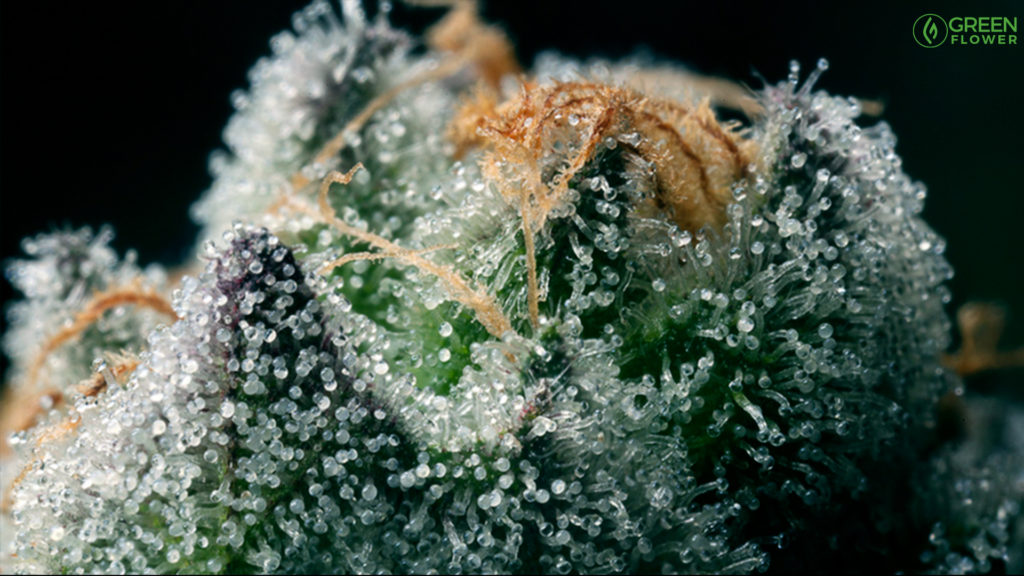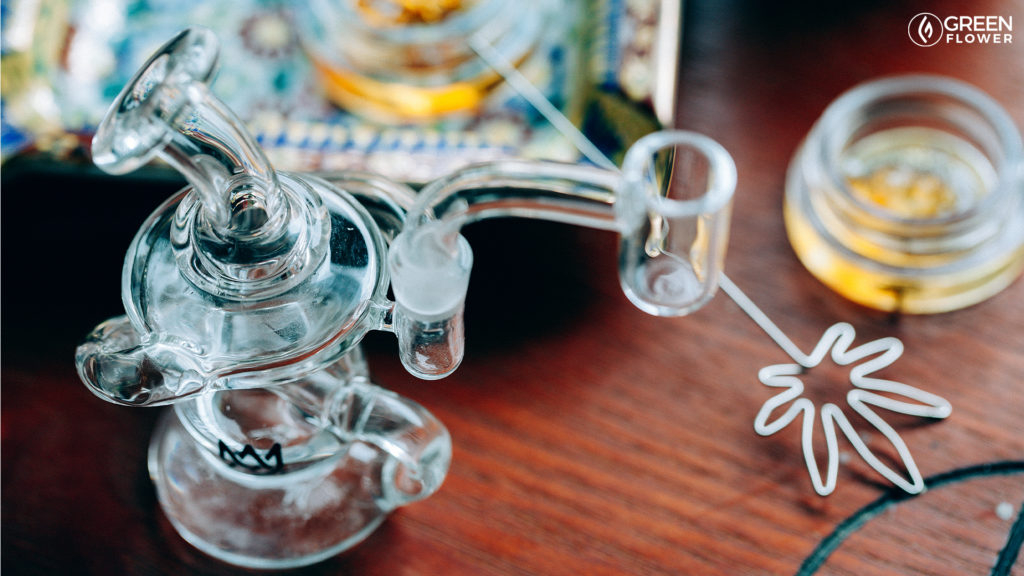It seems like nowadays, there are a million and one ways to consume cannabis. This is especially true with regard to cannabis extraction. Commonly referred to as “dabs,” cannabis extracts (also commonly referred to as concentrates) are refined products containing little to no plant matter yet pack quite the punch. But the world of extracts can be overwhelming — what’s the difference between shatter and rosin? Why would someone use a blowtorch to get high? How are concentrates made?
Read on to find out everything you wanted to know about full-spectrum cannabis extraction — and why dabbing has become one of the most common methods of consumption today for recreational and medical marijuana users.
Cannabis Extraction Basics
On a very high level (no pun intended), cannabis extraction is the act of separating the full-spectrum active ingredients in cannabis from the plant materials. The end result is a concentrated version of the raw bud, with a consistency ranging from viscous oil to thick batter to a crumbly powder. The extract can be used alongside cannabis flower in a joint, blunt, bowl, or bong, or on its own in a specially-designed rig meant for dabs.
It’s important to remember that cannabis extracts are far more potent than regular bud, including medical cannabis. The average cannabis flower on the market contains anywhere from 15-30% active ingredients, while concentrates can range between 60-95%. Concentrate newbies should always start slow when beginning their foray into dabbing.

Cannabis Extraction Methods
For hundreds of years, the only real cannabis concentrate in the game was hashish, more commonly referred to as hash, which is made by compressing sticky trichomes. Nowadays, there are seemingly endless concentrate options at the recreational and medical cannabis dispensaries. Here’s a breakdown:
Hydrocarbon Extraction
One of the most common cannabis extraction methods, this process utilizes butane or propane as an extraction solvent that passes through the raw plant material, resulting in the cannabinoids and terpenes being separated from the plant. The solvents are then removed using heat, resulting in concentrated forms of cannabis like wax, budder, shatter, and sauce. To make live resin, cannabis is not dried and cured as in typical fashion. Instead, it’s flash-frozen right after harvest and kept in this state throughout the extraction process, in order to preserve the full terpene profile. Hydrocarbon final products may also be referred to as BHO, short for butane hash oil.
Supercritical CO2 Extraction
Supercritical CO2 extraction has been used in the food and agriculture sectors for decades but has gained popularity in the cannabis industry thanks in part to increased demand for products like disposable vape pens and cartridges. It works by pressurizing carbon dioxide in metal tanks until it becomes a supercritical fluid upon reaching its boiling point, which is then passed through cannabis, taking with it active ingredients as well as waxes and lipids. Any residual solvent is then removed. The result is a viscous oil, which can be further processed via distillation, which removes the waxes and lipids. Distillate, while containing more cannabinoid content, is not considered full-spectrum due to the removal of this material.
Ethanol Extraction
Another old-school method of extraction, the ethanol extraction method is often touted for its ability to be conducted in hot, cold, or room temperature conditions, making it fairly easy to do. Cannabis plant material is soaked in ethanol, a form of alcohol, which strips away the cannabinoids and terpenes. The oils extracted are then filtered and any leftover alcohol is purged (also known as winterization). This process is typically used in the making of cannabis tinctures and Rick Simpson Oil.
Solventless Extraction
There are a number of different ways to create cannabis concentrates without solvents. While more labor-intensive, solventless extracts are desirable because they’re 100% natural and artisanal in the way they’re crafted. Dry sift, a form of pressed kief, is made via mechanically separating trichomes from the plant via a system of tightly-wound screens. Ice water hash, commonly referred to as bubble hash, is created by putting cannabis buds through an ice water “wash” and then a series of screen bags to continually filter out the resin glands. Rosin, another popular high-quality solventless cannabis concentrate, uses heat and high pressure to essentially “squish” out the active ingredients from the plant material. This method has become popular for DIY extractors, who use a hair straightener and wax paper to make rosin at home.

How To Consume Cannabis Concentrates
As discussed above, there are several ways to consume cannabis concentrates with dabbing being arguably the most popular. A traditional dab involves the use of an apparatus called a rig, which looks similar to a water bong. A small bowl called a nail is heated to extremely high temperatures, typically with a butane torch. Once it reaches the desired temperature, a small “dab” of concentrate is placed on the nail using a special tool resembling a pin or shovel. The concentrate is instantly vaporized, and the vapor is inhaled through the mouthpiece of the rig. Any residual cannabis oil is wiped out with a cotton swab. Some people prefer what’s called a cold start dab, wherein the material is placed on the nail prior to heating.
Another way to dab is with a “nectar collector,” a vertical vaporizer that is sort of similar to a chillum pipe. One end is heated up and then dipped into the concentrate directly — the user then inhales from the other end. For those wishing to avoid using a blowtorch, especially medical cannabis users, there are a number of electronic dab rigs on the market including the Puffco Peak, the Dab Dipper, and the Kandypens Oura.
Vape pens are also considered a form of dabbing. The types of vape pens include disposable devices pre-filled with oil or “cartridge” systems, which use special batteries. A pod or 510-thread vessel with a mouthpiece is filled with full spectrum or distillate oils, either at home or by a licensed producer, which then attach to the battery. There are also pens on the market that can be filled with other types of concentrates (like shatter or wax) using a quartz or ceramic chamber which needs to be cleaned frequently. Vaporizer pens have become popular thanks to their ease of use and relative portability.
Cannabis Extraction Final Thoughts
Dabbing concentrates has become a favorite consumption method of recreational and medical cannabis users around the world, particularly in the last decade. Available in a wide variety of types and consistencies, dabs deliver more of the plant’s active ingredients to the body than traditional smoking. Because they’re concentrated, one dab may offer the same effect as an entire joint of bud — so caution should be used. Cannabis extraction has come a long way over the years, with new technologies certain to spring up in the future. Pay attention when shopping at the dispensary — the next big thing in dabs could show up at any time!

